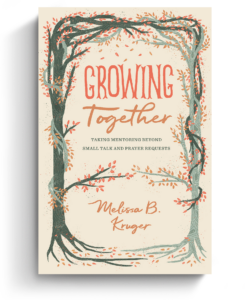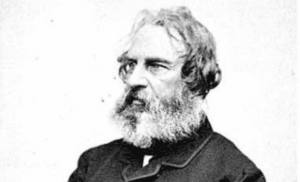The Pastor’s Toolkit is an ongoing series of practical resources for pastors, particularly focused on preaching and leadership. Find even more resources for pastors at our TGC Pastors page.
I struck gold recently while reading A. B. Bruce’s classic, The Training of the Twelve. Reflecting on Mary’s extravagance in breaking her alabaster box and pouring the costly perfume over Jesus’s head and feet, Bruce was drawn to the freedom, freshness, and originality of what this woman did (John 12:1–8).
The disciples objected to Mary’s act, viewing it as a waste, and Judas pointed out the perfume could have been sold and the proceeds given to the poor. But Jesus commended Mary. She did what she could, and her action pointed to the work that he, our great high priest, would do offering himself as the sacrifice for our sins (Mark 14:8; John 12:7).
Bruce draws out the contrast between the generous spirit of Mary and the joyless obedience of the disciples who were “servile in their adherence to certain stereotyped modes of action.” The legalistic heart always asks, “What do I have to do?” and then conforms to that pattern. But Mary asked a different question: “What can I do?”
Mary had sat at Jesus’s feet. She had experienced the comfort of his love as he wept with her over the death of her brother, Lazarus. She had witnessed a demonstration of his sovereign power in raising Lazarus from the dead. She was moved to find some original, creative way of expressing the grateful affection for Jesus that overflowed in her heart.
An idea came to her: She had an alabaster box of expensive perfume. It was the sort of thing a person would save and perhaps pass on to their kids. But it occurred to Mary there could be no better use of this prized asset than to pour it out, in its entirety, over Jesus. And there would be no better time than now.
Four Characteristics
The contrast between this fresh, original, creative outpouring of devotion and the rather measured approach of the disciples is striking, and it has obvious applications to our thinking about generous giving. What took me by surprise, though, was Bruce’s application of this to preaching. Picking up on the creative originality of Mary’s act, he writes:
What is needed to fill the churches with original preachers . . . is not more brains, or more training, or more opportunities, but above all, more heart.
There is a kind of preaching that reflects the disciples’ spirit: dutiful, disciplined, and faithful, but also wooden, joyless, and predictable. What we need is more preaching that reflects the spirit of Mary—preaching with four outstanding characteristics.
1. Christ-Centered
Everyone at the supper in Bethany that night could see Jesus meant more than the world to Mary. He was her hope, her joy, her life. The disciples (with the exception of Judas) were also devoted to Jesus, but Mary’s devotion was deeper, and on display for all to see.
Christian preachers are devoted to Jesus, but some make more of him than others. The more you are captivated by his person, work, and glory, the more central he will become in your preaching.
2. Fearless
Bruce observes that Mary was as fearless as she was original: “She does not ask beforehand, ‘What will the twelve think of this?’” Perfect love casts out fear, and Mary’s love for Jesus released her from the inhibitions that might have held her back from taking the most memorable initiative of her life.
The application of this principle to preaching is obvious: The more you love Christ, the less you will be inhibited by what Bruce describes as “that thing called public opinion, before which all mankind cowers.”
3. Creative
With the possible exception of the occasion recorded in Luke 7, where something similar happens, Mary’s initiative in pouring out the ointment was original. Her lavish gift went well beyond the normal disciplines of tithing, and the source of her innovation was the fullness of her love for Jesus.
It hadn’t occurred to me before that creativity flows from love, but Bruce is surely right to draw this connection from the anointing at Bethany. Love is creative, and creative preaching will flow from the preacher whose heart is aflame with love for Christ.
4. Memorable

Commending Mary, our Lord said, “Wherever this gospel is proclaimed in the whole world, what she has done will also be told in memory of her” (Matt. 26:13).
Growing up in a Christian home and wanting to be a pastor from an early age, I listened to the best sermons I could find. The Keswick Convention (not to be confused with early Keswick theology) offered a library service in which they loaned cassette tapes of gifted preachers, recorded at the convention. I still have pages of notes that I typed as a teenager while listening to those sermons. But apart from the notes, the impression and power of some of the messages remains imprinted in my memory, even after 40 years.
I think particularly of four messages by Alan Redpath. His preaching may be memorable simply because the Lord used it to create in me a greater spiritual hunger and ignite a deeper commitment to Christ. But God uses means, and what made Redpath’s preaching memorable was the passion of a man who was laid low by a devastating stroke, who sought God’s face in the dark valley, and who emerged with a fresh passion to live more for fully for Christ. Redpath’s heart infused his preaching of the Scriptures, and God used it to make a lasting impression on my life.
More Heart
We need all the virtues of disciplined, accurate, faithful exposition in the pulpit, but preaching that reflects the spirit of Mary requires more than a cerebral approach.
Again, Bruce is right: “What is needed to fill the church with original preachers . . . is not more brains, or more training, or more opportunities, but above all, more heart.”
Involved in Women’s Ministry? Add This to Your Discipleship Tool Kit.
 We need one another. Yet we don’t always know how to develop deep relationships to help us grow in the Christian life. Younger believers benefit from the guidance and wisdom of more mature saints as their faith deepens. But too often, potential mentors lack clarity and training on how to engage in discipling those they can influence.
We need one another. Yet we don’t always know how to develop deep relationships to help us grow in the Christian life. Younger believers benefit from the guidance and wisdom of more mature saints as their faith deepens. But too often, potential mentors lack clarity and training on how to engage in discipling those they can influence.
Whether you’re longing to find a spiritual mentor or hoping to serve as a guide for someone else, we have a FREE resource to encourage and equip you. In Growing Together: Taking Mentoring Beyond Small Talk and Prayer Requests, Melissa Kruger, TGC’s vice president of discipleship programming, offers encouraging lessons to guide conversations that promote spiritual growth in both the mentee and mentor.

































